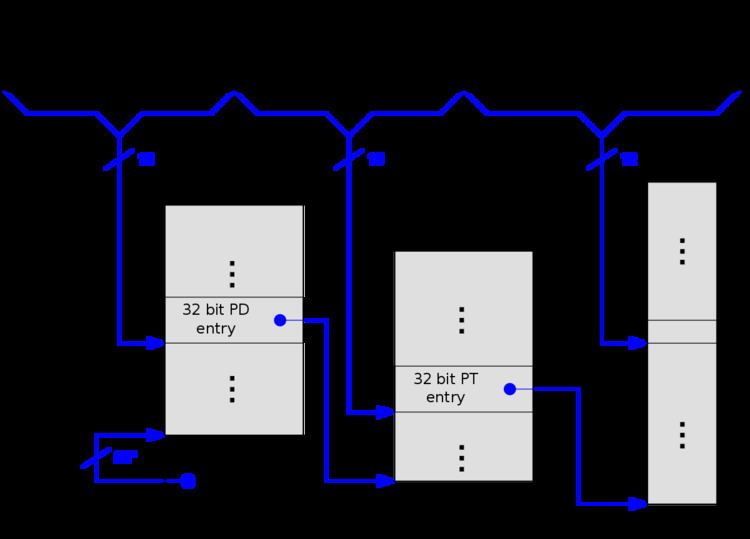 | ||
A control register is a processor register which changes or controls the general behavior of a CPU or other digital device. Common tasks performed by control registers include interrupt control, switching the addressing mode, paging control, and coprocessor control.
Contents
CR0
The CR0 register is 32 bits long on the 386 and higher processors. On x86-64 processors in long mode, it (and the other control registers) is 64 bits long. CR0 has various control flags that modify the basic operation of the processor.
CR1
Reserved(CR1 is reserved by Intel for future use.)
CR2
Contains a value called Page Fault Linear Address (PFLA). When a page fault occurs, the address the program attempted to access is stored in the CR2 register.
CR3
Used when virtual addressing is enabled, hence when the PG bit is set in CR0. CR3 enables the processor to translate linear addresses into physical addresses by locating the page directory and page tables for the current task. Typically, the upper 20 bits of CR3 become the page directory base register (PDBR), which stores the physical address of the first page directory entry.
CR4
Used in protected mode to control operations such as virtual-8086 support, enabling I/O breakpoints, page size extension and machine check exceptions.
EFER
Extended Feature Enable Register (EFER) is a model-specific register added in the AMD K6 processor, to allow enabling the SYSCALL/SYSRET instruction, and later for entering and exiting long mode. This register becomes architectural in AMD64 and has been adopted by Intel. Its MSR number is 0xC0000080.
CR8
CR8 is a new register accessible in 64-bit mode using the REX prefix. CR8 is used to prioritize external interrupts and is referred to as the task-priority register (TPR).
The AMD64 architecture allows software to define up to 15 external interrupt-priority classes. Priority classes are numbered from 1 to 15, with priority-class 1 being the lowest and priority-class 15 the highest. CR8 uses the four low-order bits for specifying a task priority and the remaining 60 bits are reserved and must be written with zeros.
System software can use the TPR register to temporarily block low-priority interrupts from interrupting a high-priority task. This is accomplished by loading TPR with a value corresponding to the highest-priority interrupt that is to be blocked. For example, loading TPR with a value of 9 (1001b) blocks all interrupts with a priority class of 9 or less, while allowing all interrupts with a priority class of 10 or more to be recognized. Loading TPR with 0 enables all external interrupts. Loading TPR with 15 (1111b) disables all external interrupts.
The TPR is cleared to 0 on reset.
